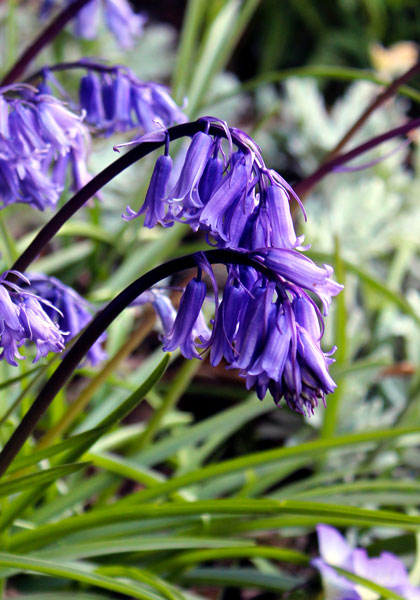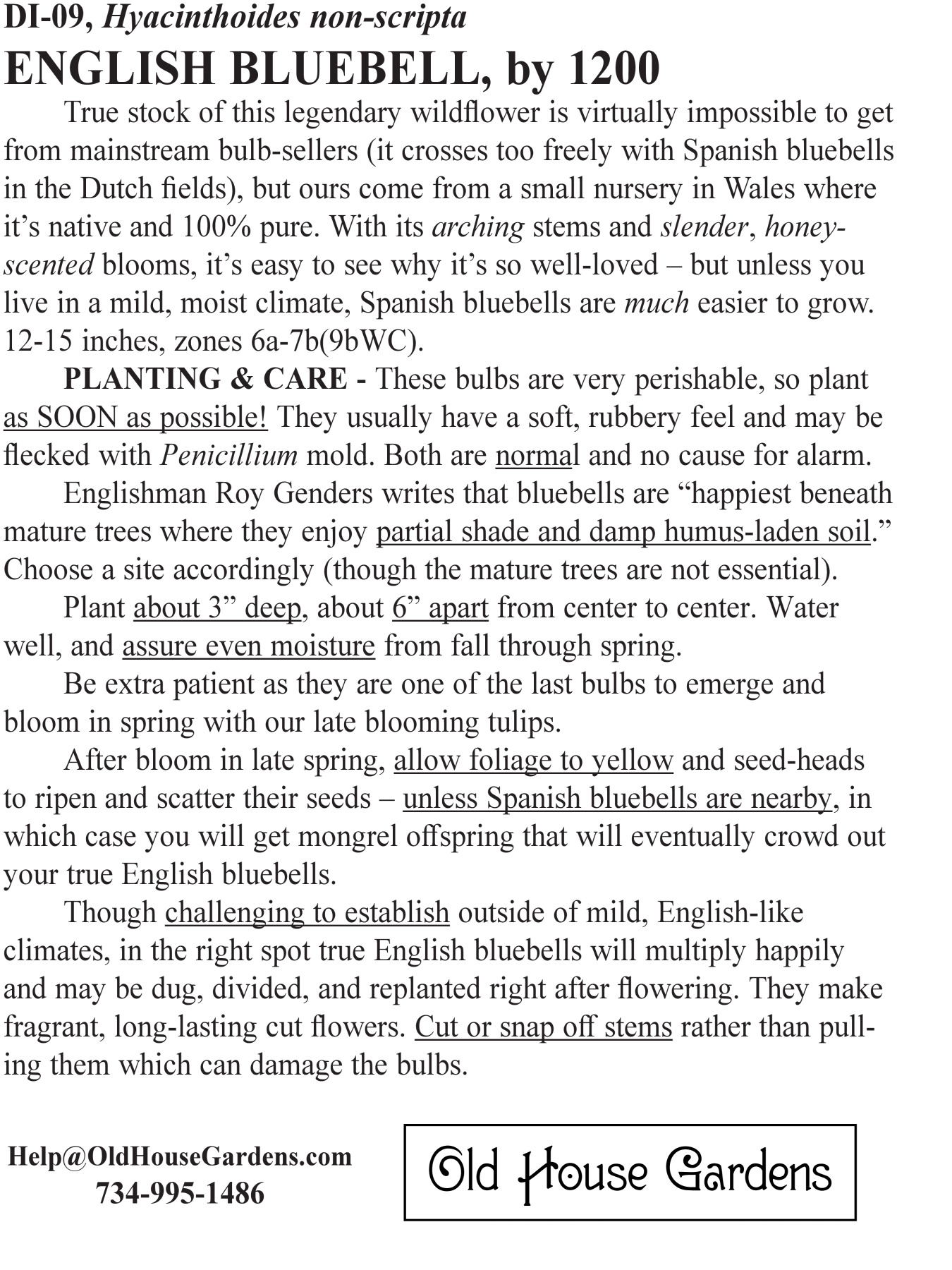|
|

 
|
|
True stock of this legendary wildflower is all but impossible to get today (it crosses too freely with Spanish bluebells in the Dutch bulb fields), but ours come from a small nursery in Wales where it’s native and still 100% pure. With slender, arching, honey-scented blooms, it’s easy to see why it’s been so well-loved for so long – though please note that unless you live in a mild, moist climate, Spanish bluebells (above) are much easier to grow. 12-15”, zones 6a-7b(9bWC), from cool, green Wales.
SOLD OUT
|
|
SUB TYPE wildflower ZONES 6a-7b(9bWC) HEIGHT 12-15” BLOOM SEASONS late spring SOURCE Wales LIGHT half sun, light shade |
PLANTING & CAREPlant ASAP when you receive them in October. Hyacinthoides bulbs are very perishable. Englishman Roy Genders writes that bluebells are “happiest beneath mature trees where they enjoy partial shade and damp humus-laden soil.” Choose a site accordingly (though the mature trees are not essential). Plant about 3” deep, about 6” apart from center to center. Water well, and assure even moisture from fall through spring. After bloom in late spring, allow foliage to yellow and seed-heads to ripen and scatter their seeds — unless Spanish bluebells are nearby, in which case you will get mongrel offspring that will eventually crowd out your true English bluebells. Though challenging to establish outside of mild, English-like climates, in the right spot true English bluebells will multiply happily and may be dug, divided, and replanted right after flowering. They make fragrant, long-lasting cut flowers. Cut or snap off stems rather than pulling them which can damage the bulbs. Learn more about growing and enjoying English bluebells at our Fall Diverse Newsletter Archives. |

|
SPRING
|
· |
SUMMER
|
· |
FALL
|
· |
LEARN MORE
|
· |
ORDERING
|

|










